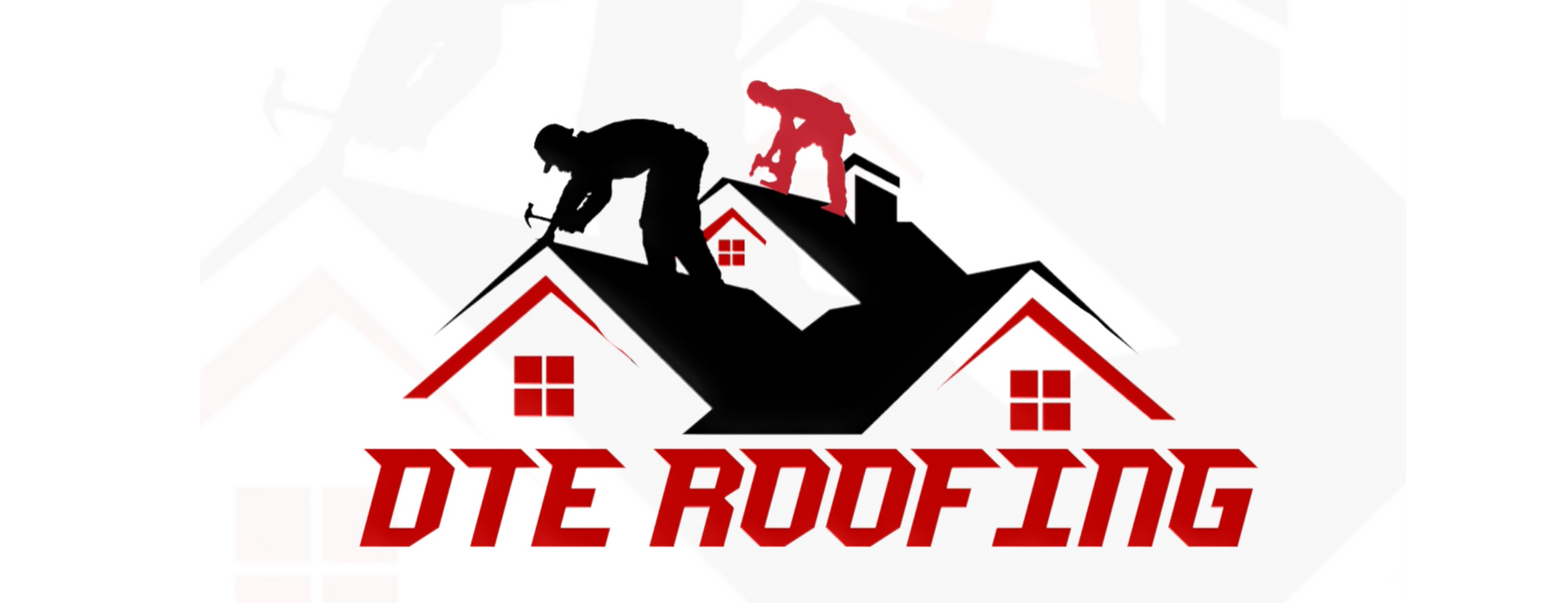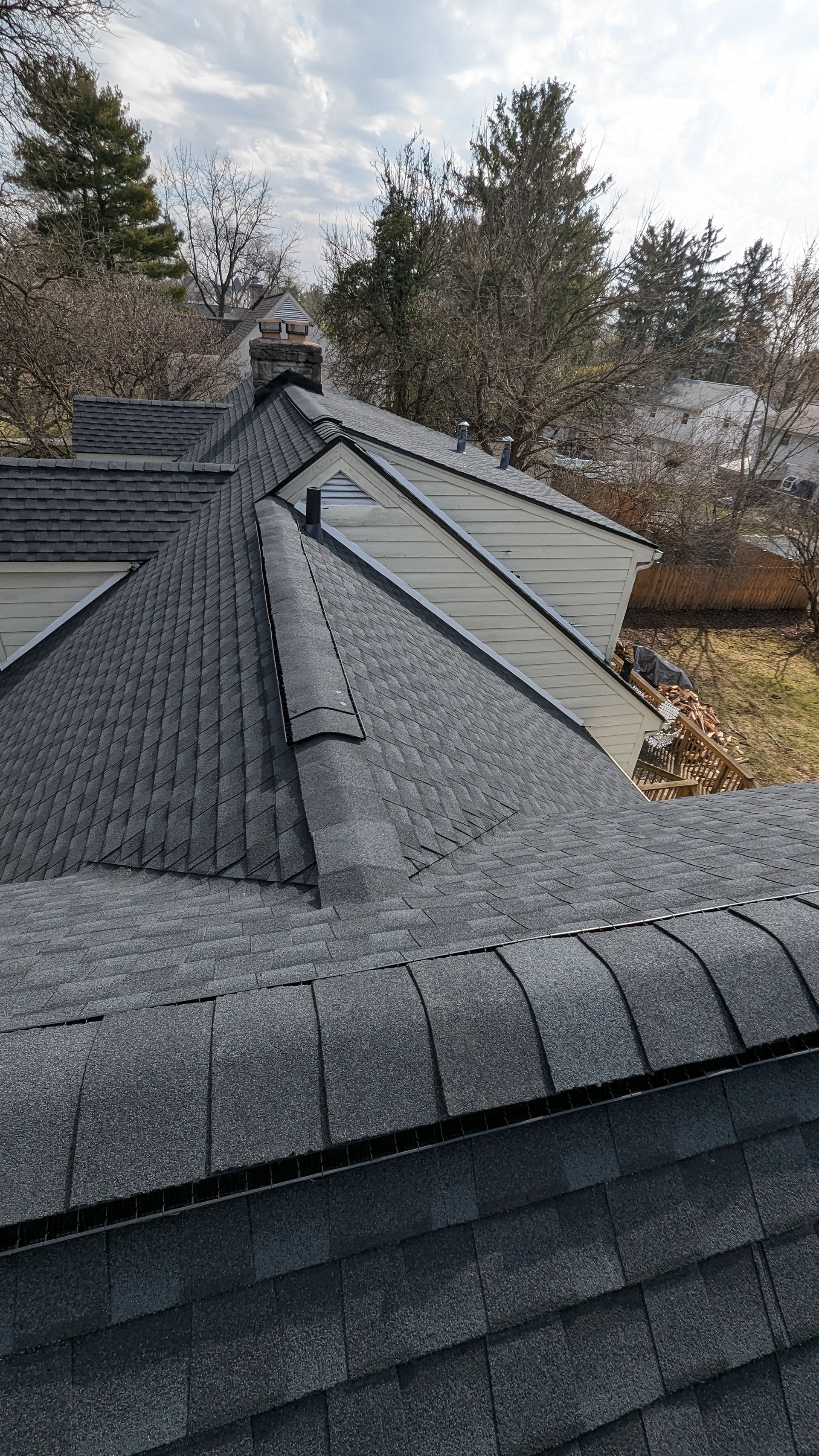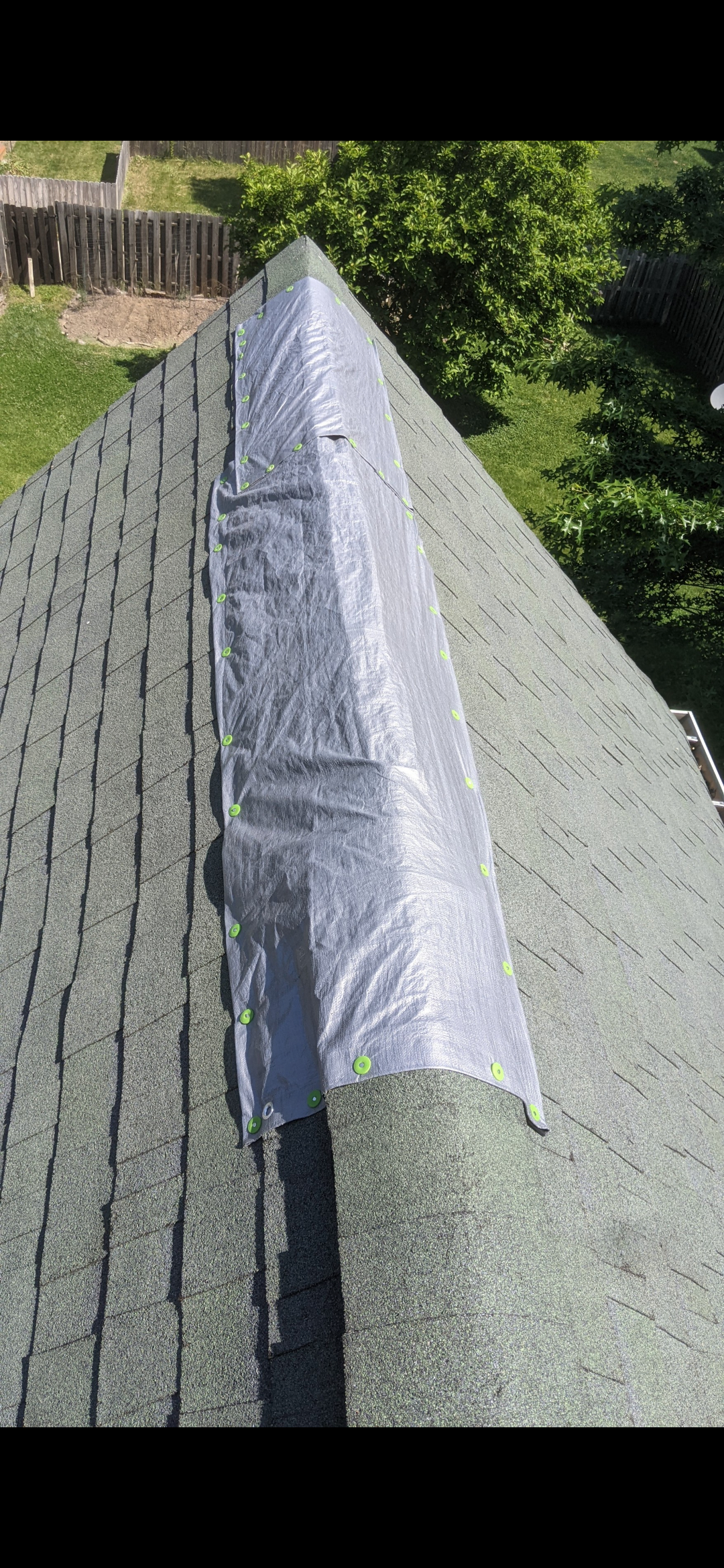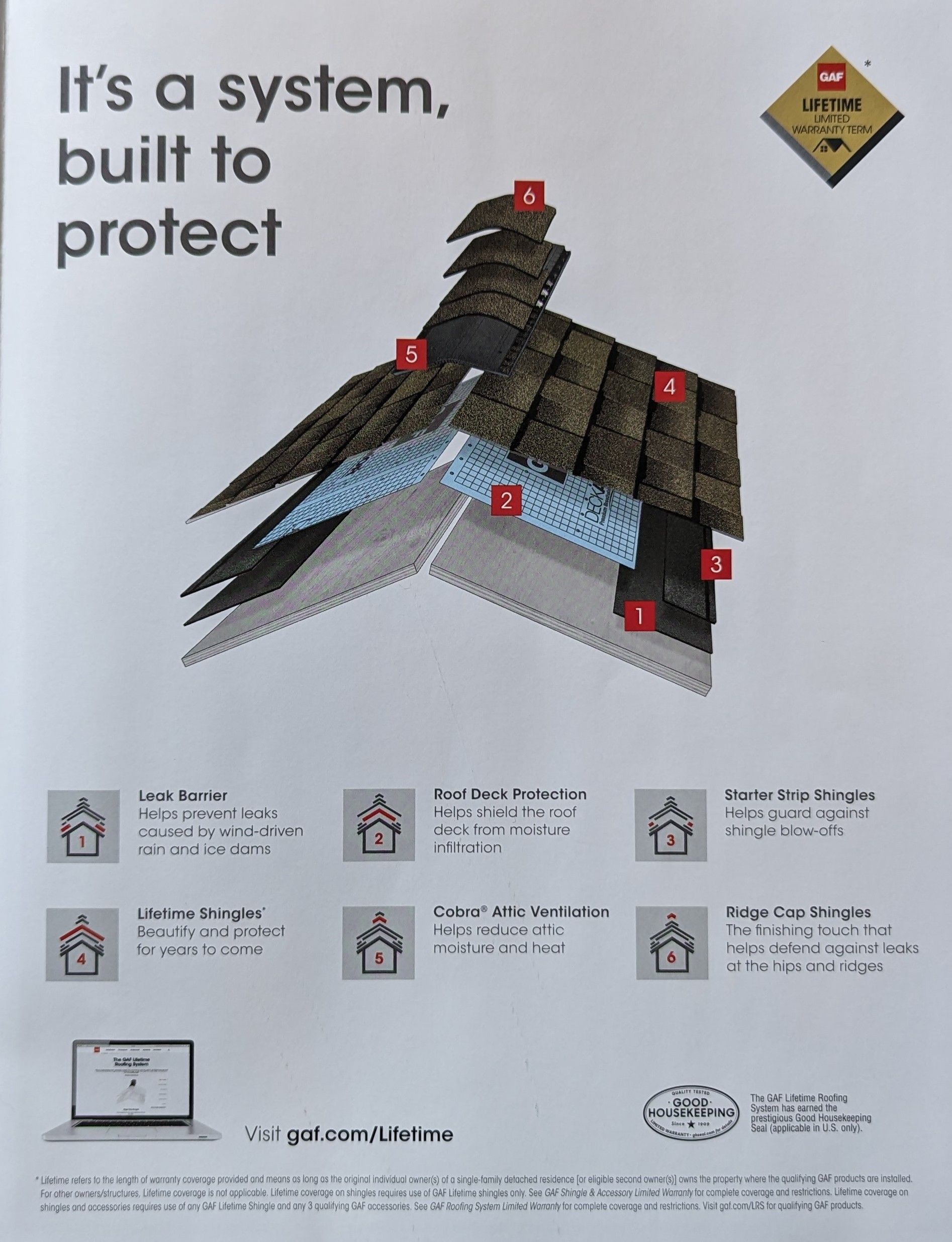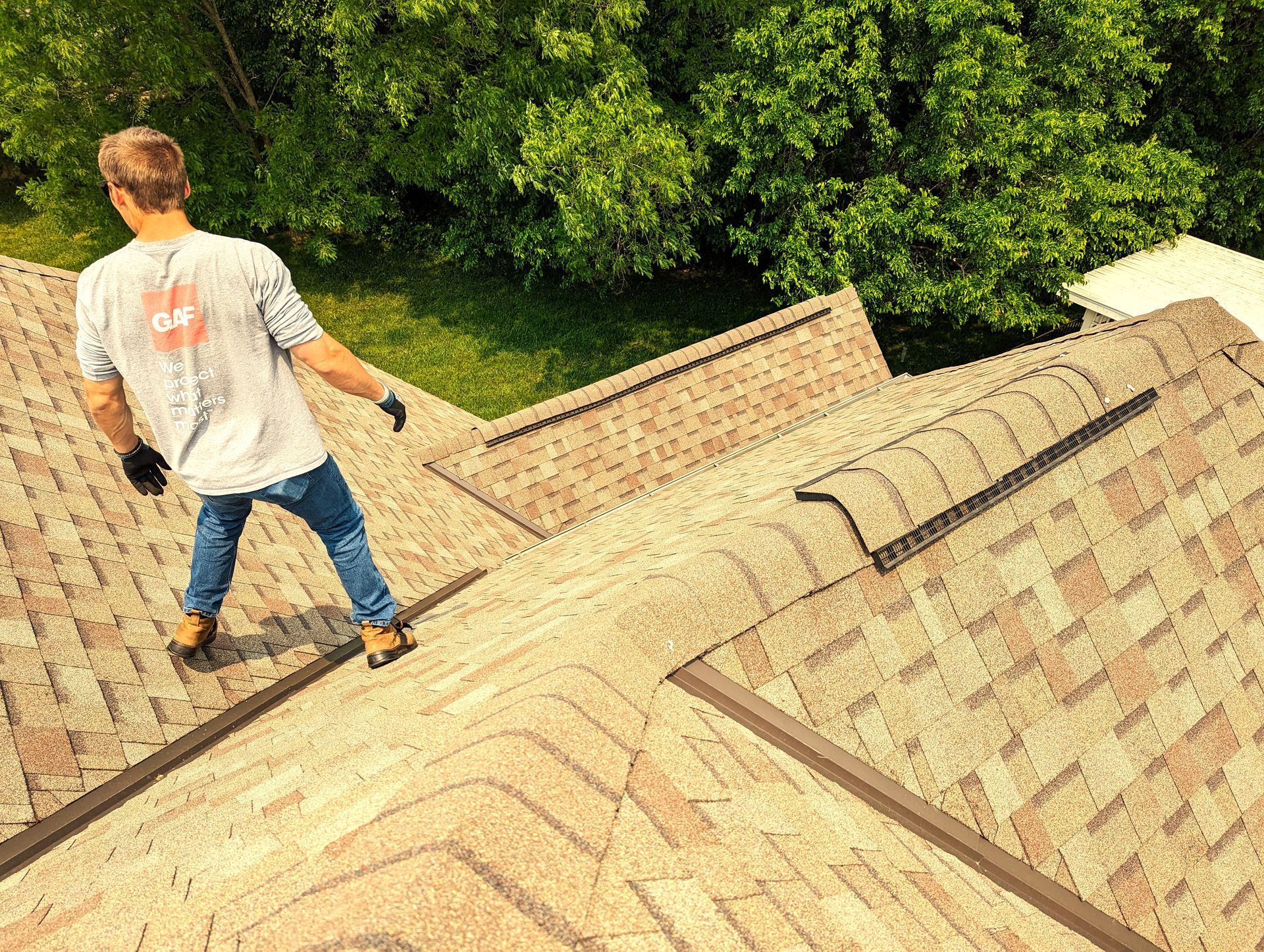Will I Be Able To Tell When It's Time To Do A New Roof?
What signs should I look out for?
There are several variables that go into whether a roof system needs to be replaced entirely or not. Here is some introductory information on the topic from our experience replacing older roofs. These combined together are variables that play a role in the overall condition of your roof and may be signs your roof is getting close to needing to be replaced.
- Visual signs that your roof is getting older.
- Shingle Condition: Damaged, cracked, or curling shingles.
- Granule Loss: Finding granules in gutters or around the property.
- Algae or Moss Growth: Indicating potential moisture issues. These live organic growths on the shingles also shorten the lifespan of the roof system. If you are in a heavily shaded area, it's recommended to have a professional clean these growths off your roof regularly, at least once a year.
- Water Stains: On ceilings or walls, indicating potential active leaks. Active leaks and issues with flashings throughout the roof system may contribute to your decision to purchase a new roof instead of spending the money on repairs.
- Sagging Areas: Signs of structural damage due to potential water infiltration. Any waviness you see when you look up at your roof from the ground may be signs your roof system is close to needing to be replaced.
2. Improper installation from previous contractor:
- Nails in keyways: Do you know how to properly nail a shingle? If you don't, you can cause leaks everywhere. Leaks caused by bad placement of nails usually present themselves 7-10 years after installing a new roof.
- Exposed fasteners: We find these on pretty much every roof we inspect for the first time. If un-noticed, these will cause leaks over time.
- No underlayment: Does your roof have underlayment on top of the decking and under the shingles? You'd be surprised how many old roofs we replace that don't have underlayment.
- Over/under driven nails:
This is where the air pressure on the nail guns is either turned up to high or not high enough during installation.
- These are the four most common installation errors we find when inspecting older roofs and all contribute to whether you may need to replace your entire roof or not.
3. Compatibility, availability, and repairability.
- Compatibility: When completing repairs to a roof system, it's required that you use materials that are compatible with each other.
- Availability: Is your roof more than 10 years old? If so, it's very likely the shingle product you have on your current roof is no longer available now, and might mean repairs couldn't be possible.
- Repairability: As an asphalt shingle system ages, the shingles become very brittle. When the shingles age enough, they become un-repairable. This happens when you end up damaging shingles that surround the area you are trying to repair.
4. Construction implications and code.
- Valleys?
- Hips?
- Ridges?
- Enforced codes?
- There are numerous codes that must be followed when performing a roof repair or replacement project, and the construction of your roof may impact whether repairs can be completed or if a full replacement is required.
Most of the time, you'll be able to tell when it's time to do a new roof or not. If you are unsure or would like a professional consultation, give us a call and we can help you assess whether it's time for you to do a new roof or not, by evaluating all of these variables together.
